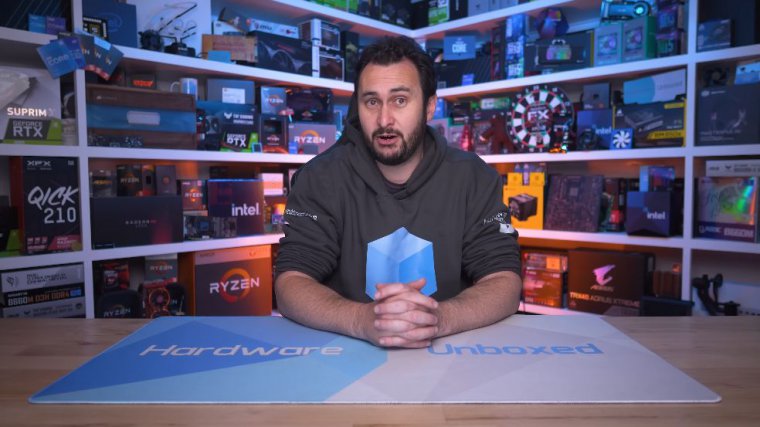News - Call Of Duty: Warzone 2. 0 Gpu & Cpu Benchmark - 1080p, 1440p And 4k Tested

Box today we're taking a look at CPU and GPU performance in Call of Duty: War Zone 2, and, as expected, this one was a bit of a nightmare test because that's just how these multiplayer games are. That being the case, I've only had the time and energy to test seven CPUs and 10 GPUs across three resolutions using two quality presets.
The results, though, are super interesting, but before we dive into them, today's sponsor spot is brought to you by MSI and their new Meg AI power supply series, which allow you to unleash next-generation performance with ATX 3.0 certification and native PCIe Gen 5 compatibility. This means with a native 12-pin VHPR connector, there's no need for those messy 8-pin adapters when using an Nvidia GeForce RTX 40-series graphics card, allowing you to create a much neater and easier to put together build.
Available in either 1000 or 1300 watt capacities Both are 80+ Platinum certified and feature 100 all-Japanese capacitors; they're also fully modular and come with premium sleeved cables. So while I normally like to test a huge amount of hardware configurations, let's say 40 GPUs, like what I did for Modern Warfare 2.

Given what's involved here, unfortunately, it's just not possible, but I think we do have a good sample of mostly current-generation hardware, so how do we test a multiplayer game or a multiplayer battle royale game like War Zone 2? As I've said, it's never easy, especially if you want to test more than one or two hardware configurations.
Gathering accurate data that you can compare across a wide range of hardware It's a real mission; one or two configurations, as I said, are no worries; they're a piece of cake. But it's more than that, and it starts to become very time-consuming. This is because no two matches play out the same way, with players dropping in different locations.
System load can vary quite a bit. I also found that realistically you can only execute a single pass per game, not just because I was killed at the end of my test almost every single time, but because as the match progresses the frame rate generally increases as there are fewer players. For example, with just 30 players left.

I saw one percent lows increase by as much as 25; the average frame rate was boosted by a less noteworthy six percent, suggesting that there was a lot less CPU load late in the game. The landing zone I chose wasn't very hot, so this allowed me to land and begin my testing without any interruptions.
The potential downside of benchmarking a quieter section of the map is that the performance can be a bit higher than what you'll typically see in the busier sections, and I did look into this, noticing that the performance was around 10 points better for the benchmark pass, but there is really very little I can do about this as you won't very often be able to complete a 20-second pass in a busy area, let alone a 60-second pass.
I did notice that testing the hardware configurations I checked meant that the margins between the various CPUs and GPUs tested should remain much the same. Now, what all of this means is that testing the hardware configurations that I did took at least as long as all of the testing that was done for Modern Warfare 2 using the built-in benchmark, but in that example.
I tested over 40 graphics cards. Now, for this Warzone 2 testing, a lot of time was wasted waiting for games to load. Well, first of all, waiting to get a game, then waiting for the game to load, and then eventually, once I was in the game. I had to get to the section used for testing, and on numerous occasions I was killed while testing, invalidating the results, and I'd have to start over.
Still, all of this data is based on a three-run average, but as I was only able to do a single run per game, it would take me three games just to get a single data point, so I've queued up a shipload of solo games at this point and played basically none of them, so that's been fun. For testing, I've covered the 1080P, 1440P, and 4K resolutions using both the ultra and medium quality presets.
We'll start with the CPU data, which was gathered using the RTX 4090 because I've only really been able to test Zen 4 and Raptor-like AMD CPUs.
Cpu, test system specs

N4 processors were tested with ddr5 6000 memory and Intel's Raptor Lake processors with ddr5 6400 memory ; those are the optimal kits I have for each platform right now, and they're similar in terms of pricing.
Cpu, 1080p ultra
Okay, let's take a look at the CPU data.
Cpu, 1080p ultra
Starting with the ultra quality preset at 1080p, we find that the core I9 1300k is the fastest CPU tested, pushing the RTX 490 to 242 FPS on average with 177 FPS for the one percent lows, making it just two percent faster than the 7950x.
When comparing the average frame rate, though, it was six percent faster when comparing one percent lows. Then we see that from the 13600K to the 13900K, we're looking at a mere seven percent difference in performance for the average frame rate and a nine percent difference for the one percent lows, so while the core I9 was certainly faster, the margins aren't exactly huge.
Then we see that the 7700x, 7900x, and 7950x all fell between the 3600k and 3900k; it was only the 7600x that was slower, trailing the 13600k by four percent, though one percent only dropped off by two percent.
Cpu, 1440p ultra

All CPUs did allow the 490 to render more than 200 FPS on average , but increasing the resolution to 1440p resulted in a hard GPU bottleneck of around 200 FPS with similar one percent lows seen across the board, so even when armed with an RTX 4090, if for some reason you are playing War Zone 2 using the ultra quality settings, providing you have a fairly modern CPU, you will almost always be GPU limited.
Cpu, 4k ultra
That being the case, this is of course true for the 4K resolution as well, as here we run into a serious GPU bottleneck limiting the average frame rate to 4090 to 145 FPS and lows of 77 to 79 FPS.
Cpu, 1080p minimum
For those of you looking to drive maximum frame rates and get that competitive visual advantage, the minimum preset works well, though I am sure tweaking a few of the settings will be optimal anyway.
Using the minimum preset, we again find that at 1080p, the 1300K is the performance king. 252 FPS on average, making it four percent faster than the 7950x. Meanwhile, the Ryzen 9 processors match the 13700k, while the 7700x only managed to match the 3600k, though it did so with 227 frames per second, making both parts 10 percent slower than the 13900k. The 7600X again disappoints with 213 frames per second, making it six percent slower than the 3600K and 15 slower than the 13900K.
Cpu, 1440p minimum

Now, increasing the resolution to 1440p had virtually no impact on the performance of AMD's M4 processors, though we did see a hit to the 13700K and 3600K along with the one percent lows of the 13900K.



